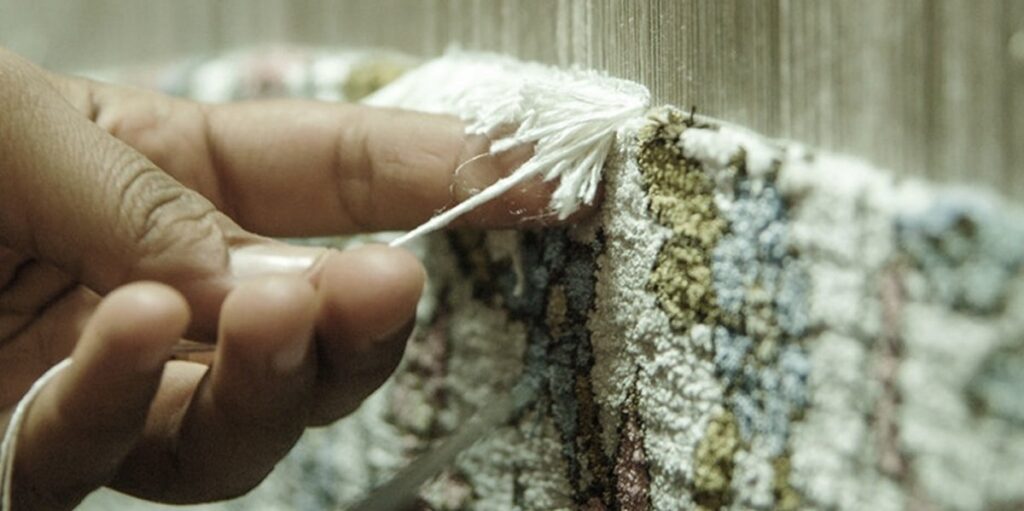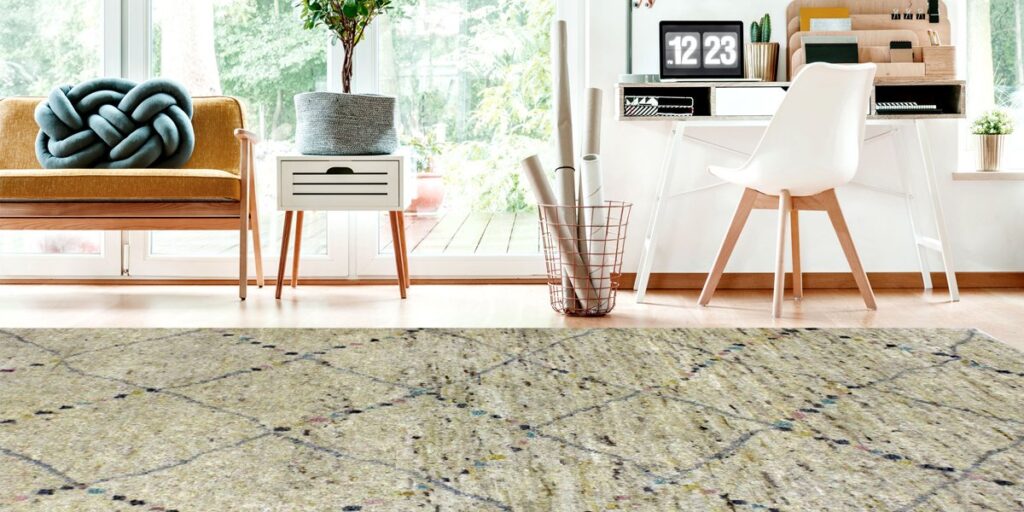
Moroccan Rugs began with the Berber Tribes on the plains of Marrakesh and the rugged terrain of the High Atlas and Middle Atlas Mountains. Berbers are the indigenous people of Morocco, inhabiting the area long before the Arab invasion of the 7th century.
The weaving techniques have been passed down from generation to generation and only local products are used, such as wool from their own sheep and natural dyes from local items such as saffron, henna, pomegranate and teas. Weaving looms are found in each home and one or more women may sit in front of the loom creating a design without using either a pattern or a diagram. Each rug may take months, if not years, to complete as the weaver builds the rug from thousands (and sometimes millions) of individually tied knots.
No pattern or diagram is used to create a rug and, therefore, each design is unique. There are tribal variations, however, found in the colors used and patterns. The designs are often symbolic and may represent life passages or healing. They may also tell the story of the weaver’s life or of the tribe. Rug weaving is also a way for the weaver to express their daily preoccupations and superstitions.

Hand-woven Moroccan carpets from the Taznakht tribe of the High Atlas Mountains are pile rugs characterized by a high sheen and softness. They are known for the quality of the wool used and for their rich, warm colors. Since 1940, Taznakht has been one of the most productive and successful rug making centers in the region of the southern slopes of the Atlas mountains.
Moroccan Beni Ourain tribal rugs are well known for their minimalist design. Woven from undyed, natural wool, the background is cream and the geometric motif is woven in delicate lines of brown. The Beni Ourain tribes of the northwestern part of the Middle Atlas Mountains have long produced these rugs. It was this rug that Le Corbusier made famous when he used it as a design element.
The Azilal, another rug that has recently gained popularity, has a background of undyed ivory wool and is decorated with sometimes colorful geometric designs. It combines knots and flatweave techniques. There will be a single knotted line followed by two woven lines. The Azilals are produced in the High Atlas Mountains.
The kilim is a flat weave and comes in all sizes and shades of color. These rugs are made from wool as well as cotton and sabra silk from the cactus plant. There are recurring geometric designs and very often the evil eye, a symbol of protection, will be found in the pattern. A more modern version of the Kilim is the Berber Picasso which is all wool and designed with brightly colored, intricate geometric patterns.

